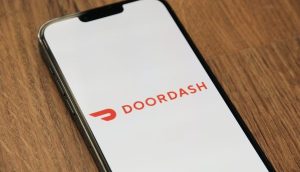With more powerful capabilities on a mobile phone than ever, is there as big of a need for wearables as once thought?
There may not be, according to eMarketer, which downgraded its projections for wearable adoption going forward, following its most recent study on the technology.
While use of wearables in the U.S. is expected by 12.6% over last year, with 44 million adults in the country (17.6% penetration) predicted to use a wearable device at least once per month in 2017. That growth is set to slow over the years, predicted to reach 54.9 million adults (21.1% penetration) by 2020.
Penetration is only slightly lower in Canada right now. A study by the Media Technology Monitor, released in January, found that penetration of wearables among Canadians was at 14% in 2016 (15.8% for U.S. in the same year), although Toronto over-indexed on penetration at 18%.
Wearable devices are also most popular with Generation X in Canada, according to the MTM — one in five Canadians age 35 to 49 owns at least one wearable, with FitBit being the most popular brand.
The forward-looking predictions made by eMarketer are significantly lower than the last time it looked ahead at the world of wearables in late 2015. That year, it estimated that 63.7 million American adults would use wearables regularly in 2016, and that by 2019, that total would reach close to 87 million. The reason for this downgrade was because eMarketer had predicted significantly more success for the Apple Watch in its previous forecasting.
Nicole Perrin, analyst with eMarketer, said in the company’s Behind the Numbers podcast that it had been very bullish on the Apple Watch’s performance and saw it bringing an air of excitement to the wearables market, which had previously been dominated by fitness trackers. However, she admitted that it has not been the game-changer it predicted.
While Apple doesn’t release numbers for individual units sold, Perrin said analysts have all agreed that the sales have been disappointing. “Based on all of our research, the market continues to be dominated by those less sophisticated fitness bands.”
Indeed, by eMarketer’s research, 2016 saw 80.7 million shipments of so-called “basic wearables” worldwide — basic wearables being defined as devices not running third-party apps and serving more niche purposes, such as FitBits. By contrast, smart-watches other wearables that do run third-party apps represented only 21.5 million shipments worldwide last year.
Citing research from the International Data Corporation (IDC), eMarketer found that internet users in Canada, as well as the U.S. and Australia, were still twice as likely to use a fitness tracker than a smartwatch.
The two biggest reasons for low penetration, said Perrin, are price and perception of limited usage cases. The study found that most respondents were comfortable spending $200 or less on a smartwatch, but most start beyond that (including the Apple Watch, which ranges from $259 to $1499 U.S.).
But she said there’s simply not enough difference between smart watches and smartphones, and that no developer has yet to come up with a “killer app” that would make smart watches truly unique.
“Basically, it does what your phone does and a little bit more, and since it has to be tethered to your phone — you can’t say, ‘I’ll take my Apple Watch and leave my smart phone at home,’ it doesn’t seem to add that much.”
Aside from smart watches and fitness trackers, wearable cameras, which include self-mounted cameras and novelty items like Snap’s Spectacles, could be flying under the radar. According to analytics firm Tractica, shipments of werables cameras worldwide reached 7.4 million in 2015, which was far beyond its initial estimates for that year. It now expects 24 million to ship worldwide by 2021. As for Snap spectacles, there were no public numbers for shipments, but Perrin added that even if the devices aren’t seen as useful, it doesn’t mean purchasers aren’t interested in the fun aspect.
“Maybe just a genuinely fun thing is a different entry point for wearables into a broader audience,” she said. “Snap is definitely hoping that they’ll take off and transform the public vision of [the company] into something a little bit different.”
The other big wearable that seems to be on everyone’s minds is VR headsets. While 76% of U.S. consumers report awareness of the product, only 30% expressed a desire to own and 10% reported already owning one. That may be due again to the price tolerance of consumers. Popular VR headsets such as the Oculus Rift and HTC Vive cost upwards of $600, and that’s without the compatible computer to run VR programming. The Samsung Gear VR headset, which runs a smartphone as a screen, comes in at under $100, but users must own a compatible Samsung smartphone.
Still, the study found that marketers want to incorporate wearables into their plans in some capacity. In a study of U.S. B2C marketers, only 6% of respondents see wearables playing “no role at all” in their marketing by 2021, while 35% say it will play a “very significant” part and 31% say it will play a “significant” part. Meanwhile, anything deemed part of the “internet of things” family, which can include smart security systems, smart pet food dispensers and even smart toothbrushes (and Perrin noted has some crossover with wearables) may see slightly more takeoff by 2021, with only 1% of marketers saying it would play no role at all.
But there was very little discussion about current efforts of wearable marketing, said Perrin. “I didn’t really talk to anyone right now who was interested in push notifications to wearables. I did talk about some implementations of fun campaigns that involved wearables but weren’t delivered to wearables.” One example was a Jaguar campaign at Wimbledon 2015 by Mindshare, which outfitted select audience members with wearables and delivered results such as when the audience’s heart rates rose on social media.
“Going forward, what weables will be able to do [for marketers] is placing a user in a certain location at a certain time, as well as being able to talk to other devices,” she said. “For marketers, there’s some potentially more exciting applications that involve that functionality, but that’s just not the world we’re living in right now.”
Image courtesy of WikiCommons.























